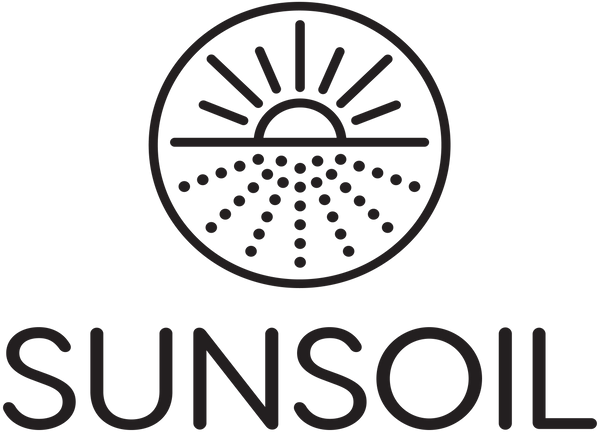The hemp plant is versatile and hardy, but it takes the right growing techniques and experience to make it thrive. Sunsoil’s farms are located in Vermont's Northeast Kingdom, where the soil is rich with nutrients but where unpredictable weather conditions make for a short growing season. Successfully farming hemp in Vermont requires both an understanding of the climate’s volatility and a deep knowledge of the life cycle of the hemp plant. We see the process through from seed to shelf.

Sunsoil breeds our own hemp seeds rather than cloning plants. Our seeds have been bred in this region and have been adapted to produce high yields in the Vermont climate. This process is beneficial for a couple of reasons. Plants grown from seeds are more hardy and less susceptible to disease. Plants can grow naturally from the beginning, without having to go through the root adaptations of a cloned plant as they grow.
 In the spring, we begin to grow the seedlings in greenhouses carefully maintained at the right temperature, which helps extend our growing season and gives them a head start. The root system begins to grow, and the plants spend about 45 days in this early stage of their life cycle between early April and June. By the time these plants are ready to move to the fields, they will be 12-18 inches tall. During the most recent growing season, we started about 100,000 seeds this way.
In the spring, we begin to grow the seedlings in greenhouses carefully maintained at the right temperature, which helps extend our growing season and gives them a head start. The root system begins to grow, and the plants spend about 45 days in this early stage of their life cycle between early April and June. By the time these plants are ready to move to the fields, they will be 12-18 inches tall. During the most recent growing season, we started about 100,000 seeds this way.
 In early June, our workers at the farm transfer the hemp plants from the greenhouses into the ground. Within an hour, drip irrigation is flowing to wet the plants’ roots. From there, we begin the process of helping them avoid stresses that could impact their health and growth.
In early June, our workers at the farm transfer the hemp plants from the greenhouses into the ground. Within an hour, drip irrigation is flowing to wet the plants’ roots. From there, we begin the process of helping them avoid stresses that could impact their health and growth.
 We farm organically. We fertilize with organic nutrients such as chicken manure, which is rich in organic matter as well as nitrogen to nourish the plants. Throughout early summer, when the plants’ root systems begin to flourish, each plant grows vigorously under our watchful farmers’ attention. In the early weeks of the 100-day Vermont growing season, Sunsoil’s crews work by hand to remove weeds and grasses that threaten the young hemp plants. Soon the plants can cast shade to protect themselves, preventing the growth of weeds and grasses.
We farm organically. We fertilize with organic nutrients such as chicken manure, which is rich in organic matter as well as nitrogen to nourish the plants. Throughout early summer, when the plants’ root systems begin to flourish, each plant grows vigorously under our watchful farmers’ attention. In the early weeks of the 100-day Vermont growing season, Sunsoil’s crews work by hand to remove weeds and grasses that threaten the young hemp plants. Soon the plants can cast shade to protect themselves, preventing the growth of weeds and grasses.
Certified organic farming techniques promote traceability throughout the process. We are able to trace our seeds from the day we plant them in the greenhouse to their placement in rows in our fields. This enables us to test plants by batches from all over the fields, improving the transparency of our products and making it more efficient to identify any potential problems.
 It is time for harvest when the hemp plant reaches a peak of fluorescence, which requires experienced eyes to identify. Much of the harvest process involves checking for full potential and ripeness among the plants. Timing is crucial. Plants harvested too early will not have the same amounts of CBD and other compounds. Because the hemp plant tends to mature relatively slowly, a large percentage of the oils and CBD are created in the last few weeks of the plant’s maturation.
It is time for harvest when the hemp plant reaches a peak of fluorescence, which requires experienced eyes to identify. Much of the harvest process involves checking for full potential and ripeness among the plants. Timing is crucial. Plants harvested too early will not have the same amounts of CBD and other compounds. Because the hemp plant tends to mature relatively slowly, a large percentage of the oils and CBD are created in the last few weeks of the plant’s maturation.
While we’re harvesting, we’re also racing against time to beat a hard freeze. Hemp plants can endure frost, but a hard freeze signals the end of the season. At the peak of harvest, when all the plants are finally mature, Sunsoil has 200 people pushing hard 7 days a week for 10-12 hours a day at full speed to bag, dry, label and weigh our plants.
 These plants stand 6-8 feet tall, and quality control remains very hands-on during the harvest. Each plant is cut by hand, loaded into trucks, and ultimately checked five to six times to make sure there are no impurities or sub-optimal flowers or branches entering the extraction process.
These plants stand 6-8 feet tall, and quality control remains very hands-on during the harvest. Each plant is cut by hand, loaded into trucks, and ultimately checked five to six times to make sure there are no impurities or sub-optimal flowers or branches entering the extraction process.
 After harvest the plants are dried in specially-built barns before transitioning to our whole-plant lipid infusion process. Sunsoil uses only organic coconut oil, heat and pressure to extract the hemp plant’s full spectrum of cannabinoids and terpenes. This foundation of our whole-plant products is then combined with natural ingredients to create our tinctures and capsules. A QR code on every bottle links the product to third-party tests as well as information on the exact batch and area where the original plants were grown on our Vermont farm.
After harvest the plants are dried in specially-built barns before transitioning to our whole-plant lipid infusion process. Sunsoil uses only organic coconut oil, heat and pressure to extract the hemp plant’s full spectrum of cannabinoids and terpenes. This foundation of our whole-plant products is then combined with natural ingredients to create our tinctures and capsules. A QR code on every bottle links the product to third-party tests as well as information on the exact batch and area where the original plants were grown on our Vermont farm.
 From the very beginning of the hemp plant’s life, our emphasis is on the connection between the plant’s roots and the soil. What is occurring below the earth is as important as what’s happening above. While the plant’s roots enable it to grow into a vigorous crop in the rich soil of Vermont, careful tending throughout the process makes for the highest quality plants and products.
From the very beginning of the hemp plant’s life, our emphasis is on the connection between the plant’s roots and the soil. What is occurring below the earth is as important as what’s happening above. While the plant’s roots enable it to grow into a vigorous crop in the rich soil of Vermont, careful tending throughout the process makes for the highest quality plants and products.


